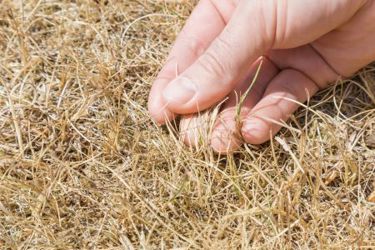Water Officials In California Demand New Consumption Plan From Central Valley Farms


The heart of America’s farming industry and increasingly scarce water are coming to a head, as officials warn that farmers are getting dangerously close to pushing supplies to the brink.
“California has put a water-stressed farming region on notice for having ‘inadequate’ plans to curb its overuse of groundwater, bringing officials closer to directly intervening, for the first time in state history, in the way growers manage their underground water supplies,” The New York Times reported. “The decision to even consider stepping in signals a willingness to take farmers to task for not doing enough to protect their aquifers.”
California has a long history of wrestling with drought, but as groundwater dwindles to concerning lows, farmers across the country are facing new challenges. In California, many have already been ordered to stop diverting water from sources that are becoming imperiled. And now flags are being raised about the plan for water in the state’s Central Valley, or lack thereof.
“The plan for the basin isn’t specific enough about how it would address the damage caused by groundwater overuse,” according to the Times. “Last year, for instance, 27 of the area’s wells went dry, and the state estimates that 700 wells could be tapped out in a future drought. The land has sunk by as much as six feet in the past decade or so, forcing residents to raise local levees to protect the city of Corcoran from flooding.”
Luckily, even as officials and agricultural operations are at odds over the use of depleting groundwater, record rain and snow has been replenishing California’s reservoirs. This has bought the state some time to figure out its future plans, but it will need to find a more permanent solution soon.
“Thanks to heavy rain and snowpack this winter that was one of the largest on record, California’s water supply has risen high enough to end drought declarations in several regions and, importantly, return water to key farming regions,” Business Insider reported. “In times of drought, Central Valley farms rely on groundwater to irrigate crops. That’s not sustainable over the long term, though, because it can reduce the volume of rivers and lakes and deplete wells.”
To read more about how water systems are overcoming drought challenges, visit Water Online’s Water Scarcity Solutions Center.
